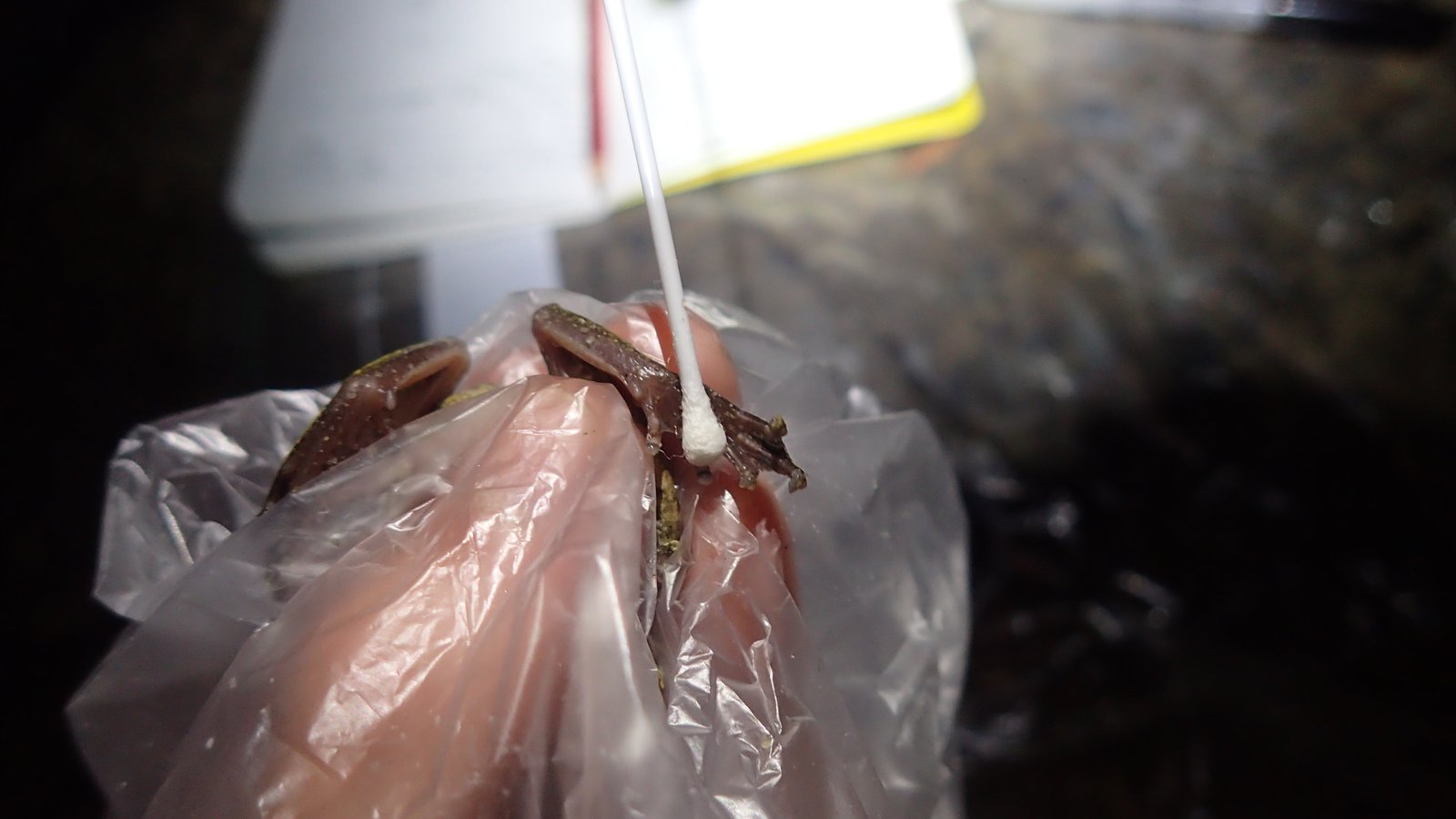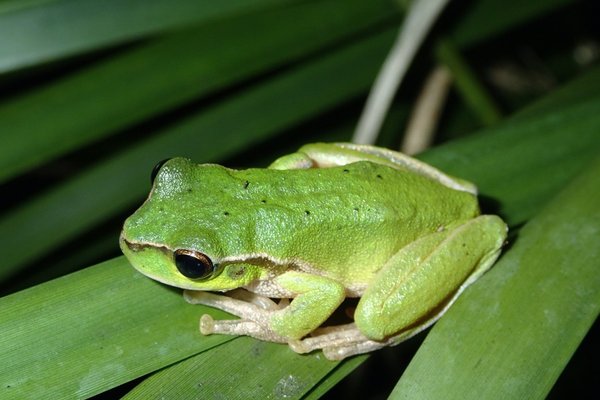Frog fungus where you least expect it
A tiny pathogen called the amphibian chytrid fungus (Batrachochytrium dendrobatidis) is implicated in the decline and extinction of hundreds of species of amphibian around the world. The presence and impact of the amphibian chytrid is known to depend partially on environmental conditions-it appears to do better (and therefore impact amphibians most) in constantly cool, humid conditions, and spatial models predict that it is not likely to occur in most arid and semi-arid regions.
However, it may be that we’re simply not predicting the pathogen in these areas because we haven’t looked as hard. After all, frogs in the arid zone are notoriously difficult to study. Many species spend most of their time buried underground and only emerge in the pouring rain, creating quick-sand like mud that will bog your car in three seconds flat. You really just have to be in the right place, at the right time, to find frogs in the arid-zone.

© Australian Museum

© Jodi Rowley
Lucky for intrepid frogger Jo Ocock, her PhD research at the Macquarie Marshes coincided with one of the biggest floods in years. This amazing wetland system in the arid zone in the Murray Darling Basin, Australia, sprung to life with the onset of the floodwaters. Thirteen species of frog were hopping about, most in high numbers. Just a few swipes over the belly of each frog with a cotton swab, and we can tell if they are infected with the amphibian chytrid or not.
Over 6% of frogs (seven of 13 species) tested positive for the amphibian chytrid. However, most seemed to have low levels of infection, and there were no signs of illness. So, while not yet a cause for alarm, our findings do highlight that dryland frogs are not safe from the amphibian chytrid.
These findings reinforce how little we really know about the amphibian chytrid fungus- and this is the most well-known of all amphibian diseases. In a time of changing climates, global trade, and rising human pressures, amphibians are likely to come under increasing threat from an array of causes including disease.
Publication: Ocock, J. F., Rowley, J. J. L., Penman, T.D., Rayner, T. S. & Kingsford, R. T. (2013). Amphibian Chytrid Prevalence in an Amphibian Community in Arid Australia. Diseases of Aquatic Organisms. 10.1007/s10393-013-0824-8











